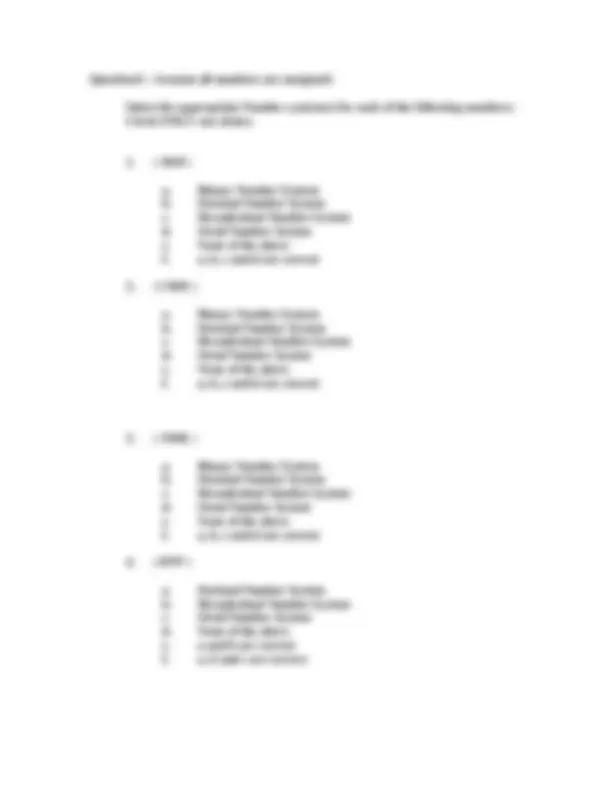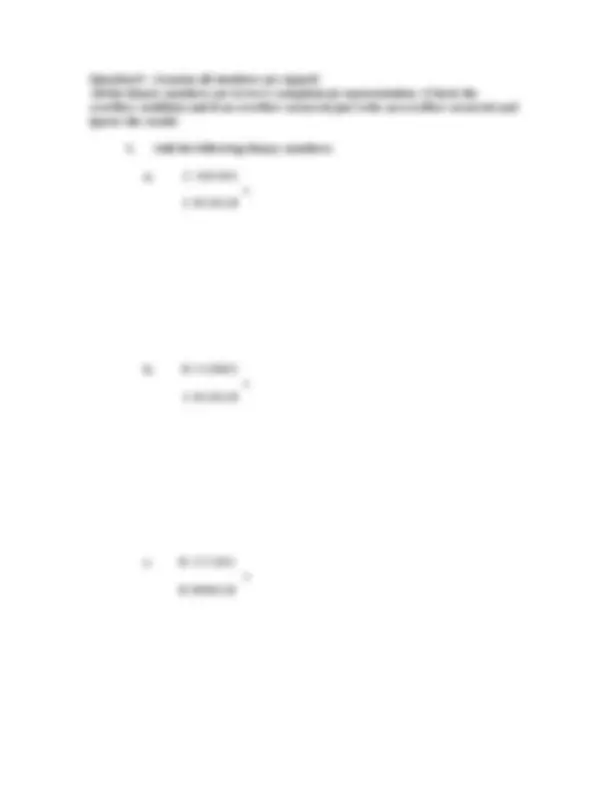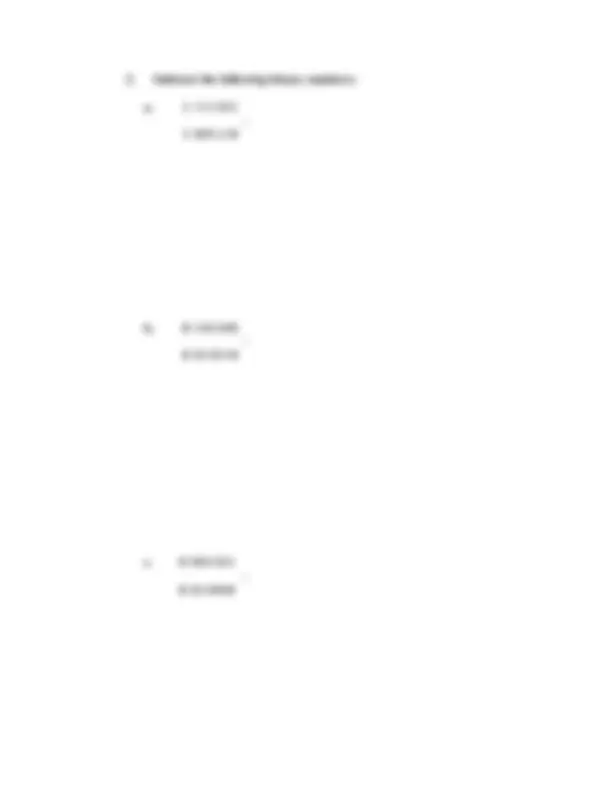





Study with the several resources on Docsity

Earn points by helping other students or get them with a premium plan


Prepare for your exams
Study with the several resources on Docsity

Earn points to download
Earn points by helping other students or get them with a premium plan
Community
Ask the community for help and clear up your study doubts
Discover the best universities in your country according to Docsity users
Free resources
Download our free guides on studying techniques, anxiety management strategies, and thesis advice from Docsity tutors
Exam 1 Material Type: Exam; Professor: Ibrahim; Class: INTRO COMPUTER ARCHITECTURE I; Subject: Computer Science; University: Old Dominion University; Term: Fall 2007;
Typology: Exams
1 / 7

This page cannot be seen from the preview
Don't miss anything!




Please, Show all your work steps. No Credit will be given if you write the final answer without showing your work steps.
Question1: (Assume all numbers are unsigned)
a) Convert the following Hex numbers to Octal.
b) Convert the following Octal numbers to Hex.
Question3: (Assume all numbers are signed) All the binary numbers are in two’s complement representation. (Check the overflow condition and if an overflow occurred just write an overflow occurred and ignore the result)
a. 1 1 0 1 0 1
1 0 1 0 1 0
b. 0 1 1 0 0 1
1 0 1 0 1 0
c. 0 1 1 1 0 1
0 0 0 0 1 0
a. 1 1 1 1 0 1
1 0 0 1 1 0
b. 0 1 0 1 0 0
0 0 1 0 1 0
c. 0 0 0 1 0 1
0 0 1 0 0 0